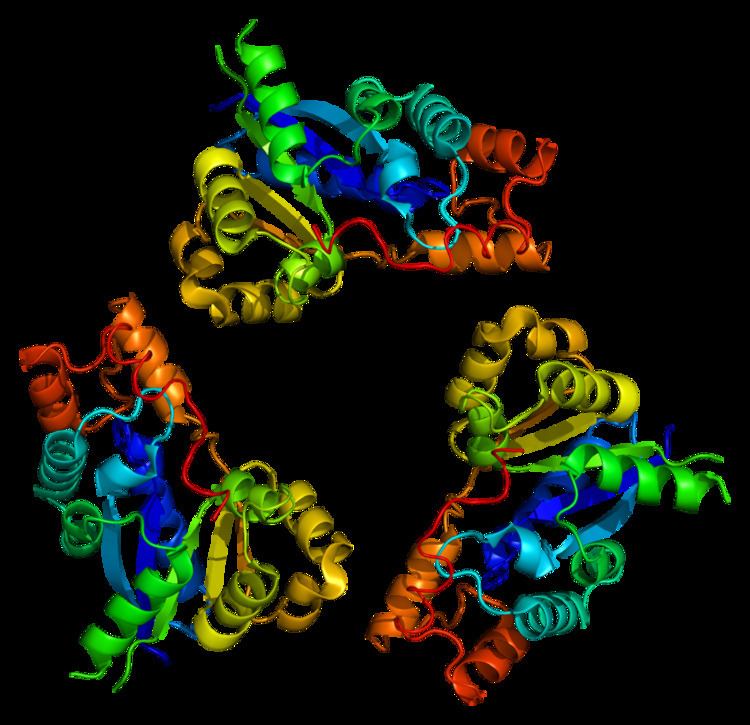Entrez 64802 | Ensembl ENSG00000173614 | |
 | ||
Aliases NMNAT1, LCA9, NMNAT, PNAT1, nicotinamide nucleotide adenylyltransferase 1 External IDs MGI: 1913704 HomoloGene: 39074 GeneCards: NMNAT1 | ||
Nicotinamide mononucleotide adenylyltransferase 1 is an enzyme that in humans is encoded by the NMNAT1 gene. It is a member of the nicotinamide-nucleotide adenylyltransferases.
Contents
Function
The coenzyme NAD and its derivatives are involved in hundreds of metabolic redox reactions and are utilized in protein ADP-ribosylation, histone deacetylation, and in some Ca2+ signaling pathways. NMNAT (EC 2.7.7.1) is a central enzyme in NAD biosynthesis, catalyzing the condensation of nicotinamide mononucleotide (NMN) or nicotinic acid mononucleotide (NaMN) with the AMP moiety of ATP to form NAD or NaAD.
NMNAT1 is the most widely expressed of three orthologous genes with nicotinamide-nucleotide adenylyltransferase (NMNAT) activity. Genetically engineered mice lacking NMNAT1 die during early embryogenesis, indicating a critical role of this gene in organismal viability. In contrast, mice lacking NMNAT2, which is expressed predominantly in neural tissues, complete development but die shortly after birth. However, NMNAT1 is dispensable for cell viability, as homozygous deletion of this gene occurs in glioblastoma tumors and cell lines. NMNAT enzymatic activity is probably essential at the cellular level, as complete ablation of NMNAT activity in model organisms leads to cellular inviability.
Clinical relevance
Mutations in this gene have been shown associated to retinal degeneration pathologies, like Leber's congenital amaurosis.
